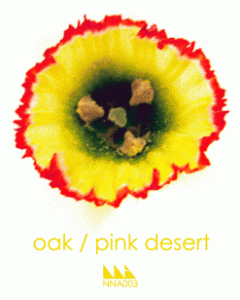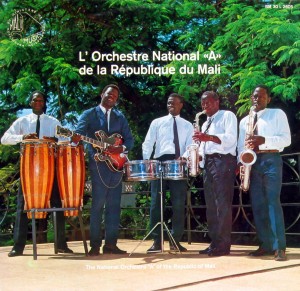Archive for October, 2008
The Music Of Islam – Vol 11: Music Of Yemen 2

The Music Of Islam
Volum Eleven: Music Of Yemen
Celestial Harmonies CD
1998
1. Ya Rabbat el-Husn (Oh Goddess of Beauty) Saleh Abdul Baqi (10:23)
2. Taba ‘an liqa (It was nice to meet) Iman Ibrahim (6:44)
3. Ana atarjjak (I implore you) Iman Ibrahim (6:44)
4. Tabi’ ‘s-samar (After the nocturnal enjoyment) Omar Ghallab (13:35)
5. Leh leh wa-hajiri (Why, oh why are you leaving me) Khalid Ali (8:43)
6. Ya sharikh el-hawel (Oh, young shepherd) Mohamed Salem Shauqi (11:14)
7. Li-llahi ma yahweh hatha ‘l-maqam (Indeed, how wonderful is this gathering) Imri Abdelrahman (9:38)
Nu New Age Tapes – 001 – 003 1
Ok, full disclosure here:
My next release, ‘Namu Kie Butsu’ will be put out by the kind folks at NNA Tapes sometime soon. Now that we got the transparency out of the way, I highly suggest you tracking down these first three tapes which came out late last month. All in all an impressive batch of phasing drift.

No secret that Sun Circle are a big hit around here. Many a sunday morning has been spent drifting off into inner space with their take on ‘ECSTATIC HIGH VOLUME DRONES, LONG FORM TRANCE MUSICS AND PEACE NOISE‘ I think Zach Wallace mentioned to me that he fell asleep while tracking this tune. You know, for us I think that’s a real plus.
mp3

Side long work of prepared guitar via a motor of some sort that despite the metallic leanings is really a rather pleasant wash of soft focused sustained BUZZ. I think I dig how this is a little more in your face than his CD on Important from last year, not that I minded the distant glow of that disc though. The second side is a rather dreamy field recording suite.

You could easily take the the Oak track on this tape as a reimagining of ‘Journey in Satchidananda‘, which, for me, is a very good thing. Same sorta lumbering bass line feel, but with the raga / cosmic element taken up a few more notches. Been looping this for days on end…
Les Meilleurs Souvenirs de la 1ére Biennale Artistique et Culturelle de la Jeunesse, 1970 4
Thanks to Mike B for turning us on to the very awesome Global Groove blog, who recently offered up the entire ‘Les Meilleurs Souvenirs de la 1ére Biennale Artistique et Culturelle de la Jeunesse‘ series from Mali. Dig around the blog for equally hot jams from other parts of the continent as well as the occasional Island burner.

Orchestre Régional de Mopti
Boro, Musicaphon 1970
rar

Orchestre Régional de Sikasso
Boro, Musicaphon 1970
rar

Orchestre Régional de Kayes
Boro, Musicaphon 1970
rar

Orchestre Régional de Ségou
Boro, Musicaphon 1970
rar

L’Orchestre National ‘A’ de la République du Mali
Boro, Musicaphon 1970
rar
Italian Prog – PFM 0
Righteous!
Japanese Temple Bells (8th-17th Century) 2

01. Myoshini Temple (AD 698), Kyoto, Hanazono (Ukyo) with drums
02. Kanzeonji Temple (7th C.), Dazaifu (Kyushu)
03. Todaiji Temple, Daibutsu (1239), Nara
04. Shofukuji Temple, Fukuoka (Kyushu)
05. Onoejinja Temple, Kamogawa
06. Kimpusenji Temple _, Yoshino (near Nara)
07. Kasaokidera Temple, Kyoto
08. Daikyodoji Temple _, Aichi (Aitsi_Central Japan) Mihama
09. Kenchoji Temple (1255), Kamakura
10. Engakuji Temple (1301), Kamakura
11. Kanasawa
12. Isehara (near Yokohama)
13. Enjoji Temple _, Otsu (near Kyoto)
14. Hokoji Temple (16th C.), Kyoto, Higashiyama
15. Chion-in Temple (1633), Kyoto, Higashiyama
16. Asakusa-Kannon Temple, Tokyo
17. Myoshini Temple (AD 698), Kyoto, Hanazono (Ukyo) (reprise)
Thanks to Michael E. for the hook up.
Brian Eno – On Land Essay 1
The idea of making music that in some way related to a sense of place – landscape, environment – had occurred to me many times over the years preceding “On Land”. Each time, however, I relegated it to a mental shelf because it hadn’t risen above being just another idea – a diagram rather than a living and breathing music. In retrospect, I now see the influence of this idea, and the many covert attempts to realise it, running through most of the work that I’ve released like an unacknowledged but central theme. This often happens; you imagine a territory rich in possibilities and try to think of how you might get to it, and then suddenly one day you look around and realise that you have been there for quite a long time.
My conscious exploration of this way of thinking about music probably began with “Another Green World” (1975). On that record I became aware of setting each place within its own particular landscape and allowing the mood of that landscape to determine the kinds of activity that could occur. Working from the realisation that my music was less and less connected with performability but was created in and of the studio, I took advantage of the fact that music produced in recording studios (rather than music reproduced by studios) has the option of creating its own psychoacoustic space. Most frequently this has been achieved by mechanical or electronic echoes and delays: short repeat echoes connoting rectilinear urban spaces, for example, and until recently, these possibilities have been used “realistically” to evoke spaces that were recognizable. From “Another Green World” onwards I became interested in exaggerating and inventing rather than replicating spaces, experimenting in particular with various techniques of time distortion. This record represents one culmination of that development and in it the landscape has ceased to be a backdrop for something else to happen in front of; instead, everything that happens is a part of the landscape. There is no longer a sharp distinction between foreground and background.
In using the term landscape I am thinking of places, times, climates and the moods that they evoke. And of expanded moments of memory too… One of the inspirations for this record was Fellini’s “Amarcord” (“I Remember”), a presumably unfaithful reconstruction of childhood moments. Watching that film, I imagined an aural counterpart to it, and that became one of the threads woven into the fabric of the music.
What qualified a piece for inclusion on the record was that it took me somewhere, but this might be somewhere that I’d never been before, or somewhere I’d only imagined going to. Lantern Marsh, for example, is a place only a few miles from where I grew up in East Anglia, but my experience of it derives not from having visited it (although I almost certainly did) but from having subsequently seen it on a map and imagining where and what it might be. We feel affinities not only with the past, but also with the futures that didn’t materialize, and with the other variations of the present that we suspect run parallel to the one we have agreed to live in.
The choice of sonic elements in these places arose less from listening to music than from listening to the world in a musical way. When I was in Ghana, for instance, I took with me a stereo microphone and a cassette recorder, ostensibly to record indigenous music and speech patterns. What I sometimes found myself doing instead was sitting out on the patio in the evenings with the microphone placed to pick up the widest possible catchment of ambient sounds from all directions, and listening to the result on my headphones. The effect of this simple technological system was to cluster all the disparate sounds into one aural frame; they became music.
Listening this way, I realised I had been moving towards a music that had this feeling; as the listener, I wanted to be situated inside a large field of loosely-knit sound, rather than placed before a tightly organised monolith (or stereolith, for that matter). I wanted to open out the aural field, to put much of the sound a considerable distance from the listener (even locating some of it “out of earshot”), and to allow the sounds to live their lives separately from one another, clustering occasionally but not “musically” bound together. This gave rise to an interesting technical difficulty. Because recording studio technology and practice developed in relation to performed music, the trend of that development has been towards greater proximity, tighter and more coherent meshing of sounds with one another. Shortly after I returned from Ghana, Robert Quine gave me a copy of Miles Davis’ “He Loved Him Madly”. Teo Macero’s revolutionary production on that piece seemed to me to have the “spacious” quality I was after, and like “Amarcord”, it too became a touchstone to which I returned frequently.
As I made these pieces, I began to take a different attitude towards both the materials and the procedures I was using. I found the synthesizer, for example, of limited usefulness because its sound tended towards a diagrammatic rather than an organic quality. My instrumentation shifted gradually through electro-mechanical and acoustic instruments towards non-instruments like pieces of chain and sticks and stones. Coupled with this transition was an increasing interest in found sound as a completely plastic and malleable material; I never felt any sense of obligation about realism. In this category I included not only recordings of rooks, frogs and insects, but also the complete body of my own earlier work. As a result, some earlier pieces I worked on became digested by later ones, which in turn became digested again. The technique is like composting: converting what would otherwise have been waste into nourishment.
Brian Eno
1982, revised February 1986